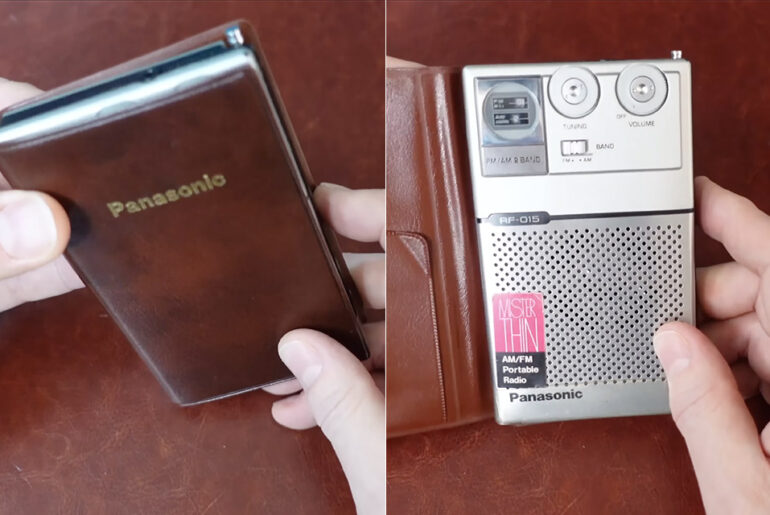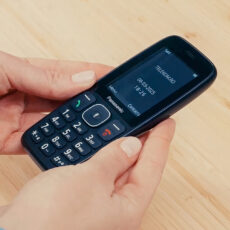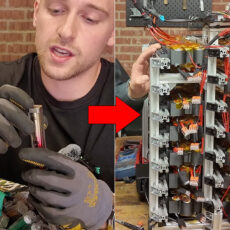
Slide your hand into a 1977 dinner jacket, and you might find a silver cigarette case, a small lighter, or—tucked beside the silk lining—a rectangle barely larger than a deck of cards. When you open the snap, the leather wallet slides open to reveal a radio. Not a toy or a gimmick, but a full-fledged AM/FM receiver from Panasonic named Mister Thin (RF-015).
Five inches long, two and a half wide, and half an inch deep sound like normal measurements for a radio today, but during the year Star Wars was released, they were considered witchcraft. Matsushita engineers reduced a speaker to the thickness of a dime, packed eleven transistors onto a matchbox-sized board, and still had room for two AAA batteries. Slide the metal shell out of its sleeve, and the grille shines like a little movie screen. When you spin the side wheel, the dials move past the glass in the same way that a roulette wheel does.
- [7400mWh (2000mAh) POWER BANK WILL KEEP DEVICES POWERED] The FosPower FOSPWB-2376 emergency radio incorporates a 7400mWh (2000mAh) power bank capable...
- [3 POWER SOURCES POWER WHEN YOU NEED IT] Use the emergency weather radio's 3 power sources when you need a boost of power or need to recharge the...
- [2 LIGHT SOURCES ALWAYS POWERED] The emergency crank radio can also provide light. The 4 LED reading light and 1W flashlight provides enough output to...
Turning the side knob past the quiet click of “on” produces a faint crackle and melody. The sound is loud, with all treble and no bottom, but clear enough to hear a ballgame in a taxi or a late-night DJ across town. One earphone jack for a single plastic bud; stereo is two years distant.
Panasonic priced the RF-015 at fifty dollars in 1977, which is equivalent to $270 today. In British Argos catalogs, it was included with fondue sets and electric cutting knives. Lancaster children rubbed their faces to shop windows and only saw myths. Myths, it turns out, can carry diplomatic passports.
On November 18, 1979, at 4 a.m. in Warsaw, diplomat Peter Burke drives his embassy Plymouth to a hollowed-out stone beside the Vistula. Polish security personnel in ordinary clothing observe from a bakery van. When Burke opens the rock, floodlights turn on. Hands frisk his coat and close around two radios. One is a classified CIA crystal box, while the other is a plain silver Mister Thin radio that tuned to 104 MHz, the same frequency as the viewers who were observing him. Local radios sold in Poland stopped at 74 MHz, and anything exceeding that was considered prohibited. The Polish SB (secret police force) videotaped every scene, narrated it like a training DVD, and stored the recording for decades.
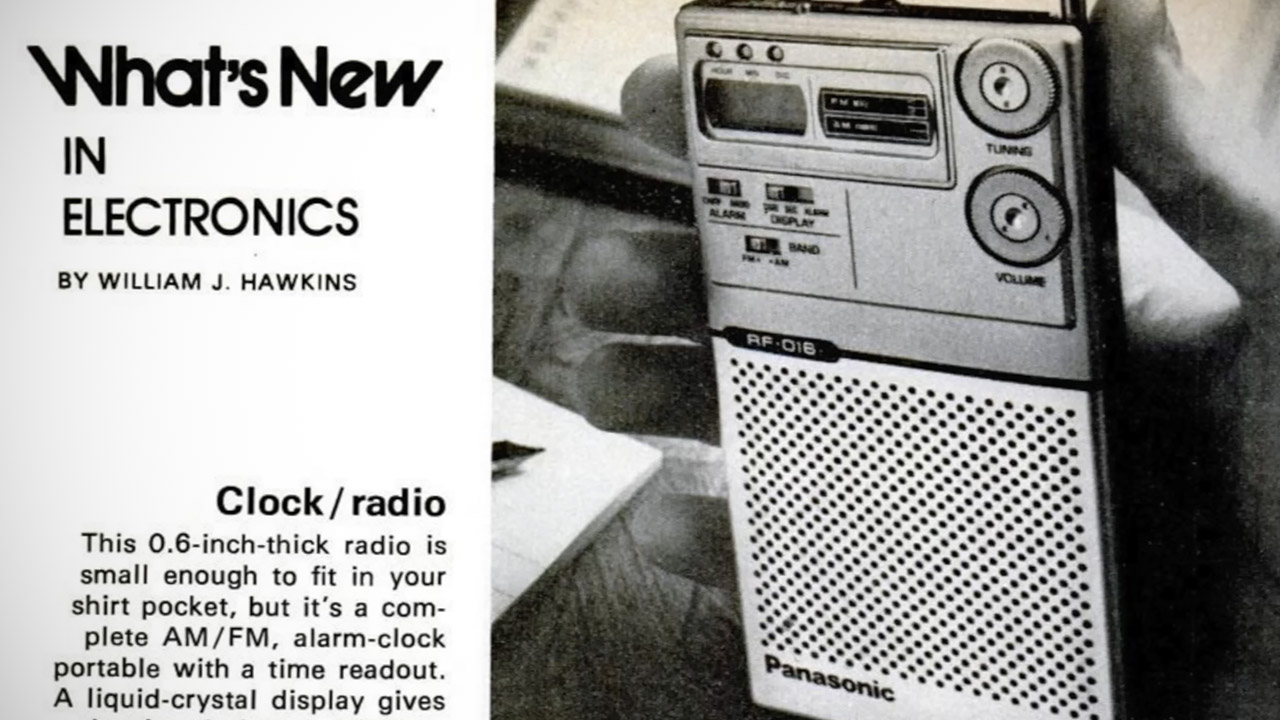
Back home, the same little radio would end up on housewives’ aprons, fastened to recipes, beach towels, and baseball games. Teenagers would smuggle it into study hall, while housewives would put it in their aprons, clipped to the pages of a cookbook. Nobody knew that one of those little units had played a key role in a Cold War sting, and Panasonic never stopped working. A year later, the RF-016 suddenly had a small green digital clock that glowed softly, and the RF-079 featured a tiny solar panel that was no larger than a postage stamp. By 1981, the RF-033 had shrunk another millimetre and replaced the leather case with a chilly, grey brushed steel one. Every box was packaged in the same basic, unadorned sleeve, as if the factory knew just how to blend in.
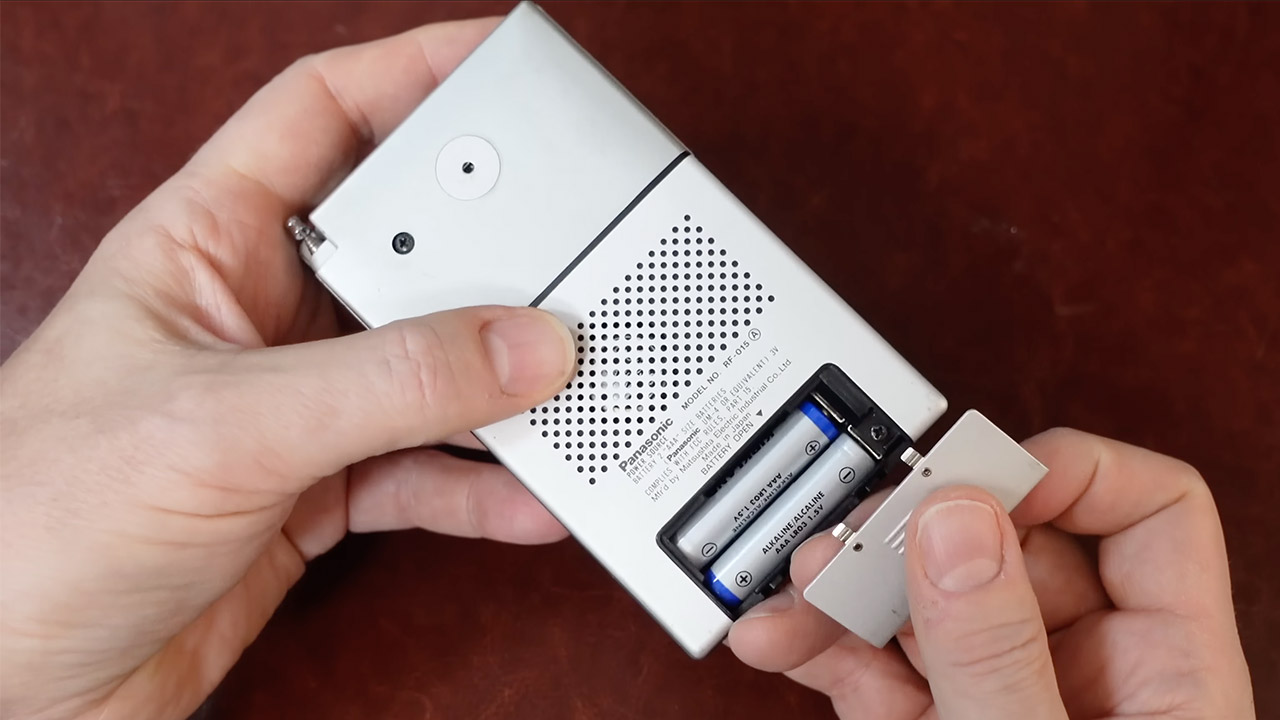
Want one? Sometimes you’ll come upon a silver slab in a charity shop for the price of a cappuccino. Plug in some new batteries, extend the whip antenna, and sit back. Mister Thin continues to scan the airwaves for signals of trouble, somewhere between the oldies and the weather forecast.

